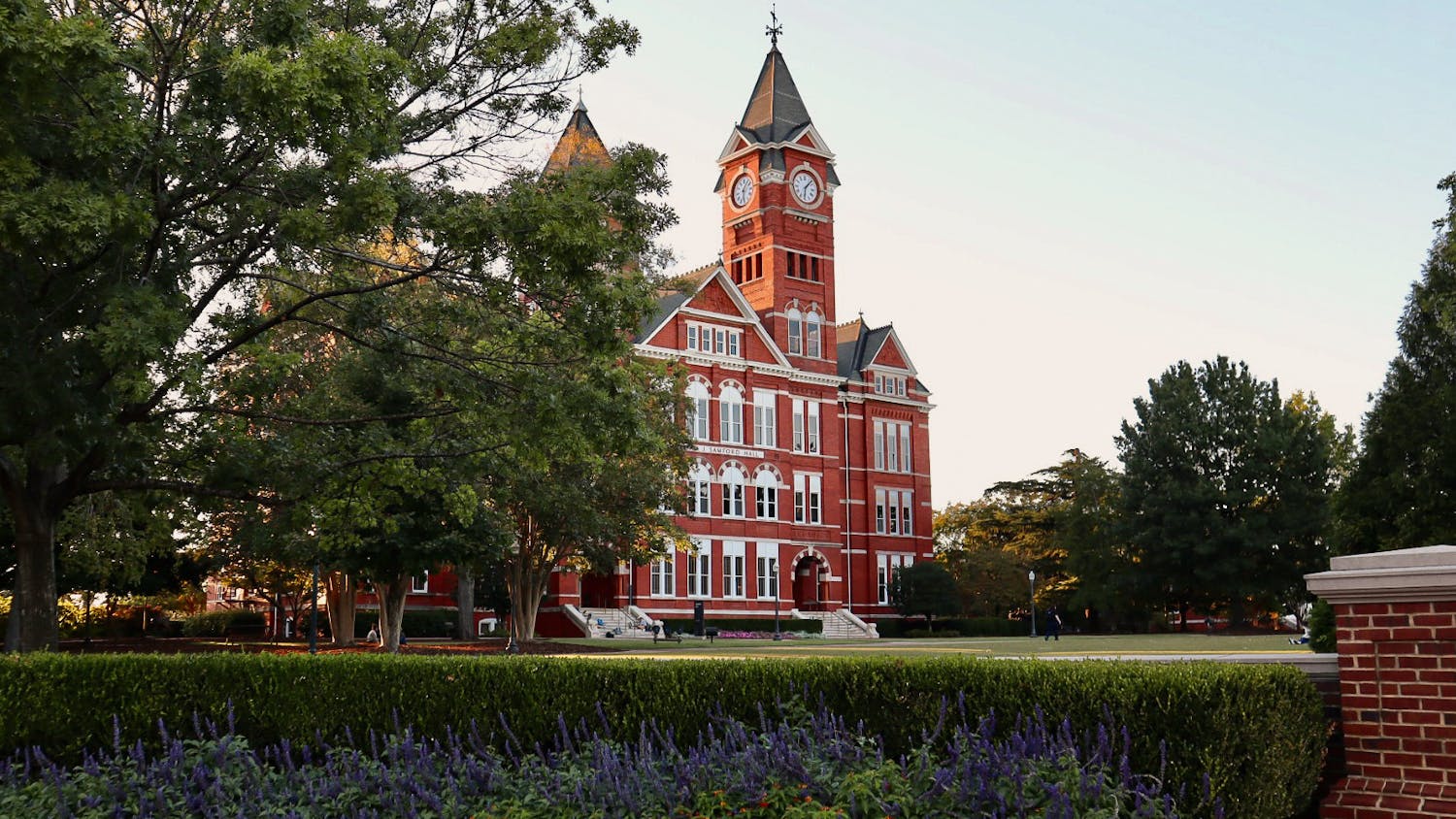Fritz Haeg makes a living transforming ordinary lawns into living sources of food.
"Imagine what could happen if everyone did this to their front lawn," said Jake Challingsworth, sophomore in environmental science who attended Haeg's "Welcoming the Wild" lecture at the Jule Collins Smith Museum of Fine Art. Since 2005, Haeg's Edible Estates project has transformed eight passive front lawns across the country into active gardens flourishing with fruits and vegetables. Haeg said growing our own food should not be unusual, even if it is placed at the front door. The first front lawn Haeg helped transform was that of a plant biologist in Salina, Kan. Haeg and the home owner planted seeds that have grown into full strawberries, okra and ripe tomatoes.
"Gardening is the easiest thing that people with modest means can do tomorrow," Haeg said. "I want to make real gardens that people know they could do themselves and enjoy."
H e showed the audience a picture of his compost pile to illustrate useful material which people tend to keep hidden, similar to the way a garden is typically concealed behind the house.
"Homes and lawns have become this transient symbol of property in the world we live in," Haeg said.
Front lawns serve as a symbol of isolation, continuity and democracy, as the average size of American homes continues to increase, Haeg said he enjoys questioning spaces and private property.
"There is an abundance of land that no one feels connected to, which is rather unfortunate," Haeg said.
Alex Johnson, freshman in mechanical engineering, bought Haeg's book, "Edible Estates: Attack on the Front Lawn," for his sister.
"It will be at our house so that I'll be the next to read it," Johnson said.
Challingsworth said he was much more interested in the projects than he expected to be.
Haeg's latest project, Animal Estates, advocates designing landscapes to sustain wild animal populations and questions whether people want animals in cities. It incorporates performances, displays, exhibitions and installations to mimic the natural environments of the animals that lived in the region years ago.
Haeg, who calls himself an animal lover, said he enjoys deciding where the bald eagle would want to sit or what would make the bobcat happy.
"In each city, I like to learn which animals would benefit from manmade architecture designed to accommodate them," Haeg said. "We should all examine what we do with the cities we've inherited and how we sustain ourselves."
Haeg studied architecture in Italy and received his architecture degree from Carnegie Mellon University. He has since become an advocate for making landscapes beautiful, functional and sustainable in unconventional ways.
Artist, activist and Spring 2010 York Distinguished Lecturer, Haeg now lives in Los Angeles.
An estimated 200 Auburn students attended the lecture Tuesday.
In a follow-up panel discussion, Auburn faculty, staff and the community will discuss the common ground shared by artists, scholars, scientists and environmentalists.
Do you like this story? The Plainsman doesn't accept money from tuition or student fees, and we don't charge a subscription fee. But you can donate to support The Plainsman.




